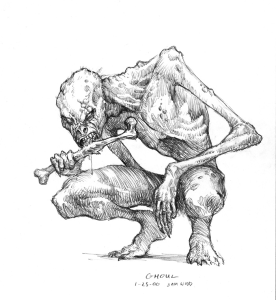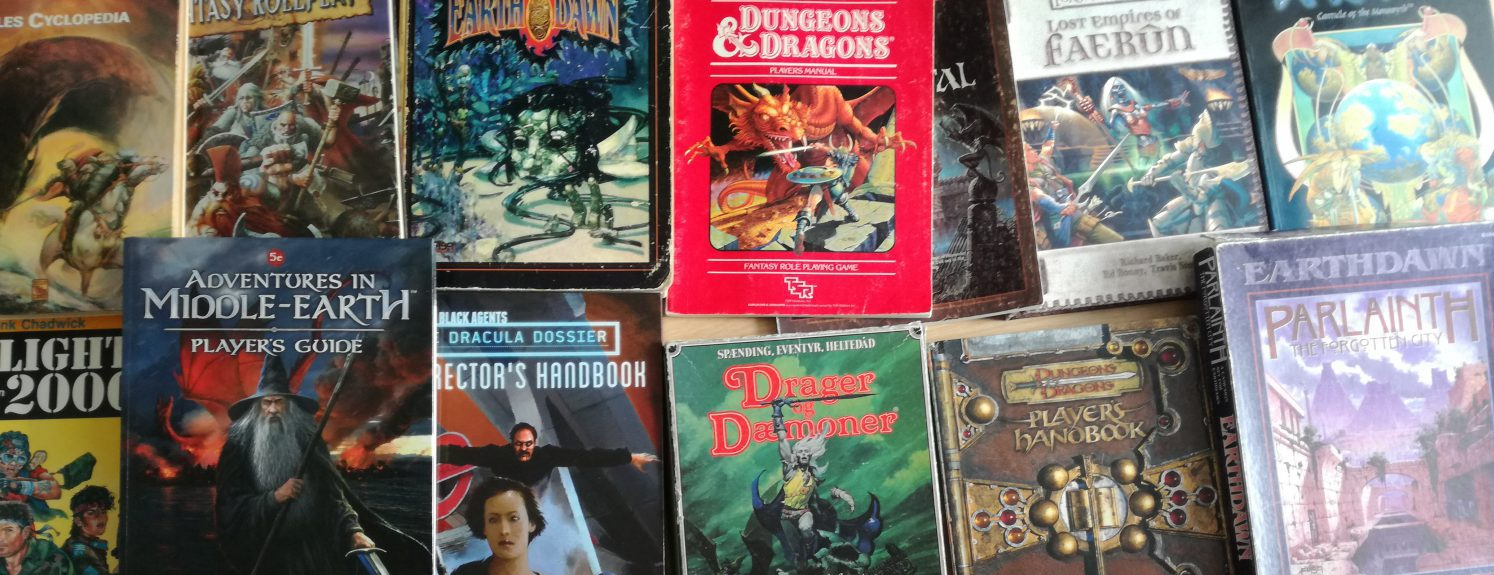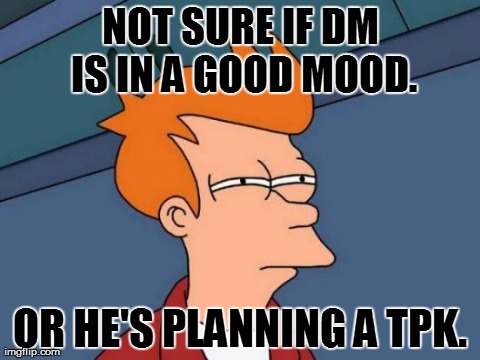
I don’t normally wish for it, or plan for it, but a TPK would just have been great for the story. Let me try and explain why…
We were playing our sixth session of Temple of Elemental Evil, this time with only 4 players with 3rd level characters and the paladin was the only healer. At first they accidentally ventured down a sloped hallway to level 2, and saw the chained hydra and chained owl bear. They engaged the owl bear, and killed the troll keeper that came after with some trouble. They explored a bit, and established that there was at least one more troll in the area. Wisely, they went back to level 1, and found their way into one of the two ghoul lairs. This is where things got really interesting.
Ghouls, and more ghouls

It was one of the many encounters in the temple that quickly turns into several waves of enemies. In this case, one of the ghouls from the first room will run into the adjoining rooms and get help from its buddies. Furthermore, two cowardly ghasts will be watching from a third room, and join the combat if they are winning, but I decided to add the mechanic that if more than half of the four ghouls were alive after a couple of rounds the two ghasts would flee.
Fortunately for the characters they killed the third ghoul by the end of round two, making the two ghasts flee. However, they flee through the room of the two boss ghasts, and these two will not back down from a fight (as described in the module).
So severely depleted, with the barbarian at 1 hp, the monk had been down once already and with no more healing power or potions, they had to face two ghasts with extra hit points. It was clear it could turn ugly quickly. With the damage output of the ghasts, any of the players would go down with one hit, which would reduce their damage output, and further increasing the odds of more players going down. My first internal reaction was ‘crap! what do I do if I kill them?’ But then it dawned on me that it would be great if I wiped them out.
Because, as you may have read here previously, I have a pool of around 12-14 players for this campaign, and I play with the group that shows up that evening (max 7 players). The area around the temple attracts a lot of adventurers, so it works out really well. It is very dynamic, and we get to see different group combos. Each session ends with the party returning to the surface. The rest of the adventurers stay at their base camp or in Hommlett, resting and planning their next raid on the dungeon.
Great flavor and motivation
Had they TPK’ed, I would have sworn the players to silence, and their party would have been yet another group of adventurers disappearing without much trace in the dangerous catacombs beneath the Temple of Elemental Evil.
It would have created a fantastic motivation for the other players (and the TPK’ed players with new characters) to go and find out what happened, and perhaps find surviving captives, or avenge them, if they weren’t (I would probably have rolled randomly who survived). I could have them as sacrifices in the deeper temples, I could have them charmed or dominated, they could be torture victims of the cult leaders. And their magic loot would turn up in new places, adding a new dimension of investigation and interrogation, such as: ‘Where did you get this cloak? This was worn by our friend Ishmael the last time we saw him…?!’ The extra sense of danger in exploring the dungeons, when the players know a TPK can happen, would also add to the tension of the game.

As it turned out, I rolled very poorly for the two ghasts, hitting the players zero times, and the players managed to win the day with very high damage output. Great for them…
But I think it is fair to say that I don’t fear having a TPK in the future. I may even wish for it, a little bit.





